You don’t have to be a commercial lighting designer to understand the importance of creating effective and efficient lighting for retail spaces.
Shoppers benefit from this, even if they don’t understand why. A well-lit store provides a warm and inviting atmosphere for customers and properly lighted products attract a customer’s attention. In fact, 80 percent of all sensory impressions come through our eyes. Thus, making your products inviting in today’s retail environment means making the most of light.
These two statistics underscore this importance:
- Research shows that effective retail lighting can enhance sales by up to 40 percent.
- An ENERGY STAR study of U.S. grocers found that converting to LED lighting increased sales by 19%.
In this blog post, we’ll share seven retail lighting design guidelines to optimize the look of your retail space and complement the interior design.
Table of Contents
- Create Balance When Lighting for Retail
- Use Ambient Lighting to Set the Mood
- Plan Shop Lighting for the Uniqueness of the Space
- Pay Attention to Texture in Retail Lighting
- Use Brightness, Color Temperature and High CRI to Enhance Lighting for Retail
- Get Smart LED Lighting for Retail Stores
- Flatter the Customer with Dressing Room Lighting
Create Balance When Lighting for Retail
Indiscriminate lighting is not conducive to showing off products in a shopping environment. But proper retail lighting design highlights the different products or areas of the store and allows the customer to focus on one thing at a time.
When creating a balanced lighting scheme for a retail store, it helps to focus on the customer experience. Effective retail lighting should create an inviting atmosphere that encourages people to browse and explore your shop.
Retail store lighting that is too bright or uses too many contrasting color temperatures can overwhelm the shopper’s senses. Instead, strike the proper balance between ambient and accent lighting.
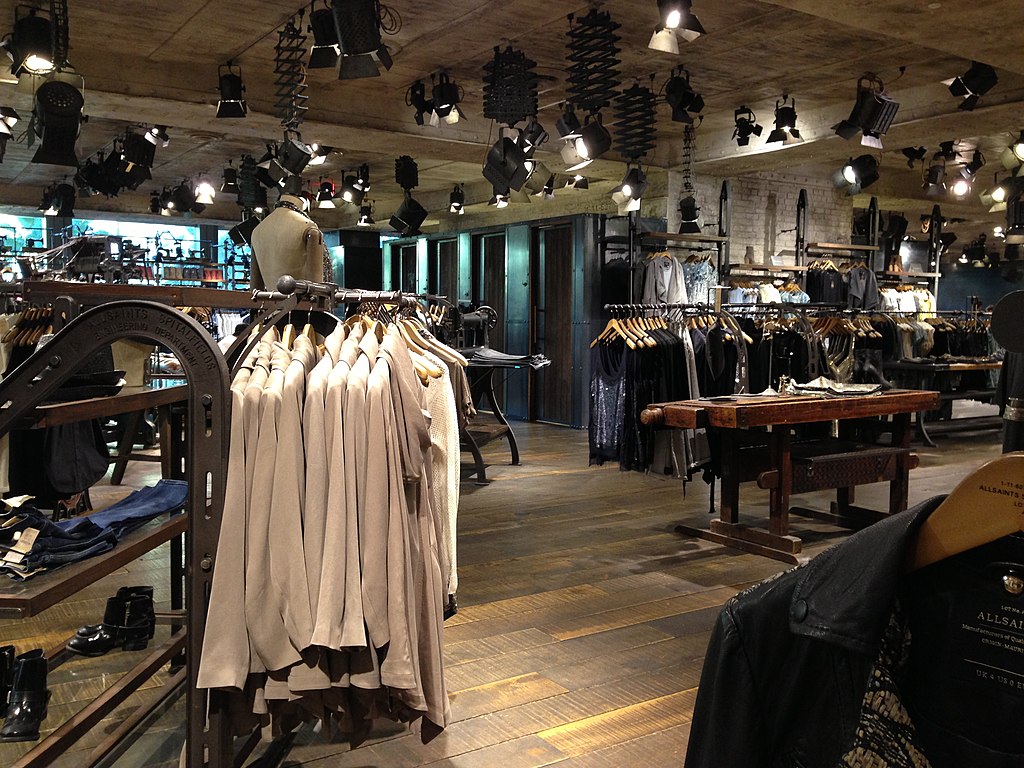
Choosing the correct color temperature, which is measured by its K (kelvin) rating, of LED bulbs is integral to a retail space. Color temperature can create either a warm or cold environment and affect how products are displayed.
To produce a pure and more natural lighting effect — ideal for dressing rooms and grocery stores — consider installing 4000-4500K bulbs. Jewelry stores can use bright bulbs up to 5000K resulting in a bluish-white color. Generally, the higher the CRI, the truer the product’s color appears under that light.
Strategically placed accent lighting can help draw attention to specific items or displays, while ambient lighting can provide an overall mood that makes shoppers feel comfortable in the space. It’s important to find the right balance between highlighting product displays and not overwhelming shoppers with too much light.
For example, you can add brighter track lighting to show off key products such as those on sale, and dimmer lighting, like wall sconces, in more low-key areas such as fitting rooms:
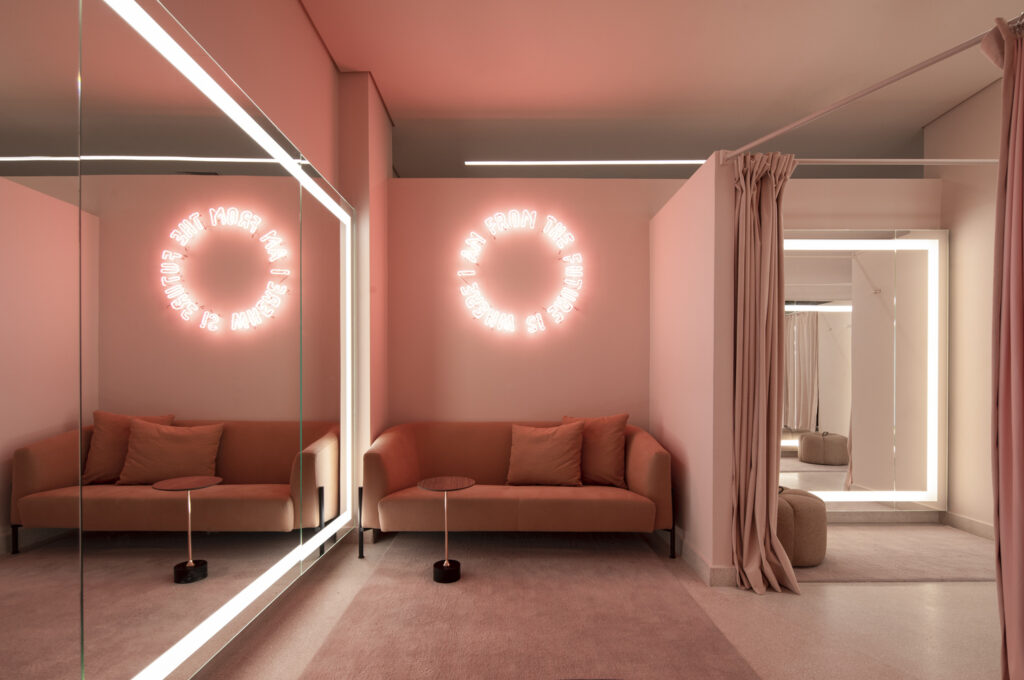
Additionally, when using different color temperatures, try to keep them consistent throughout the store so as not to distract from the overall design. Generally, the color temperature range for retail should be between 2700K and 4000K (see tip #5 below for more on color temperatures).
Research done by Greenlite Group found that well-designed retail lighting can increase sales by up to 264 percent. That may sound like an overly generous bump in revenue, but the point is: with careful planning, a retail store lighting plan can make all the difference in enhancing customer engagement and boosting sales.
Use Ambient Lighting to Set the Mood
Accent lighting can be fun, but if you accent everything, you wind up not accenting anything. You hinder the ability to make products pop. Using the right ambient lighting with just a few accents is key to retail shop lighting, like this Starbucks store:
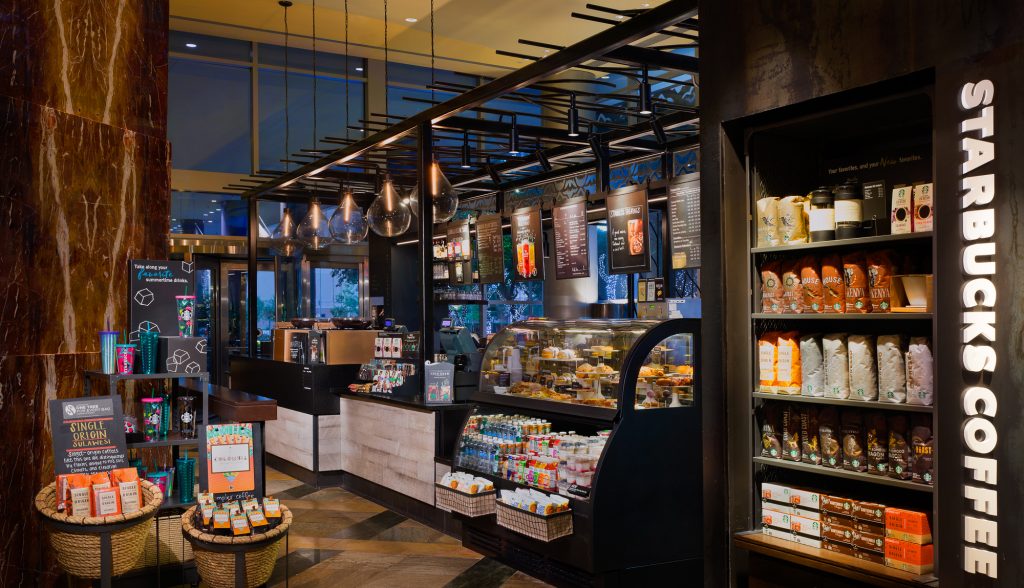
Effective ambient lighting in a retail store should be just bright enough to illuminate the products while still providing a comfortable atmosphere. It should neither wash out colors nor make items appear too dark or dull.
You can use recessed lighting, track lighting, wall-mounted fixtures and even decorative ceiling lights to create an inviting ambiance. You could then focus task lighting for one or two areas of the store where shoppers need more direct light, such as customer service desks or checkout counters:
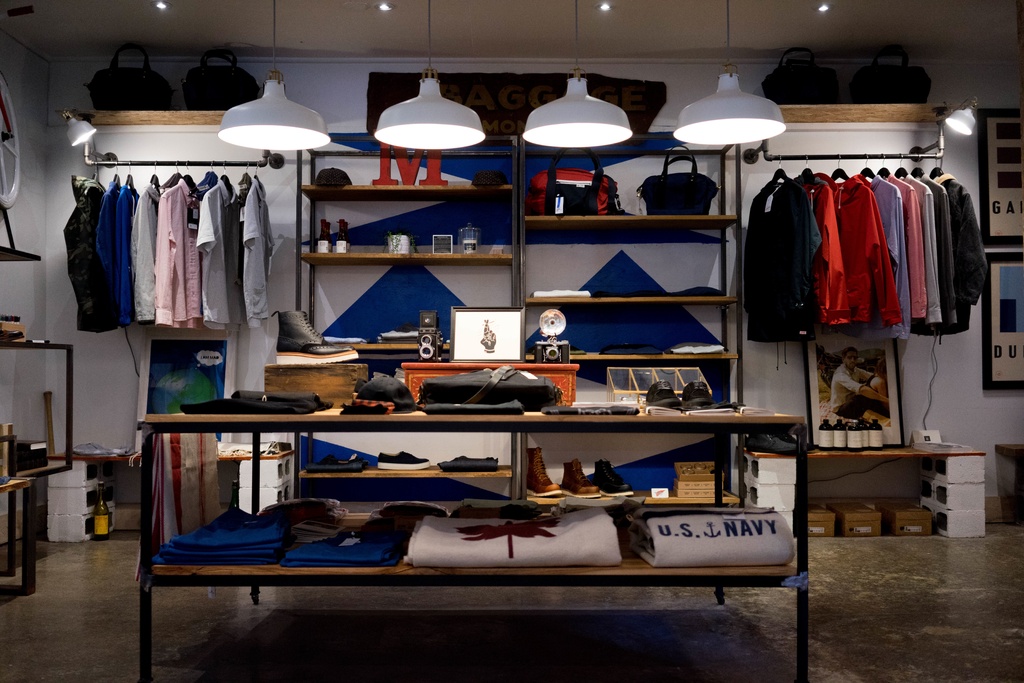
With careful selection and installation of ambient lighting, your retail space will be illuminated in a way that makes all your products shine.
Plan Shop Lighting for the Uniqueness of the Space
Planning for the unique needs of a particular space is an important part of creating an effective retail lighting design.
When considering different lighting options, think about the size and shape of your store as well as the type of products you are displaying. How big or small is the space? What type of merchandise do you sell? Where are the light fixtures located? Are there too many different fixtures randomly placed throughout the space? If so, this can cause visual chaos.
Avoid this chaotic effect by:
- Varying brightness levels to better emphasize certain products and avoiding putting lights at the same level
- Installing volumetric lighting, which casts a wide cone that provides general lighting
- Positioning each light in such a way that it enhances the product’s presence without washing out its color or details
- Using adjustable recessed lights or track lighting, which helps the lighting scheme remain versatile
- Making use of fixtures that complement both the interior decor and the overall aesthetic of your store
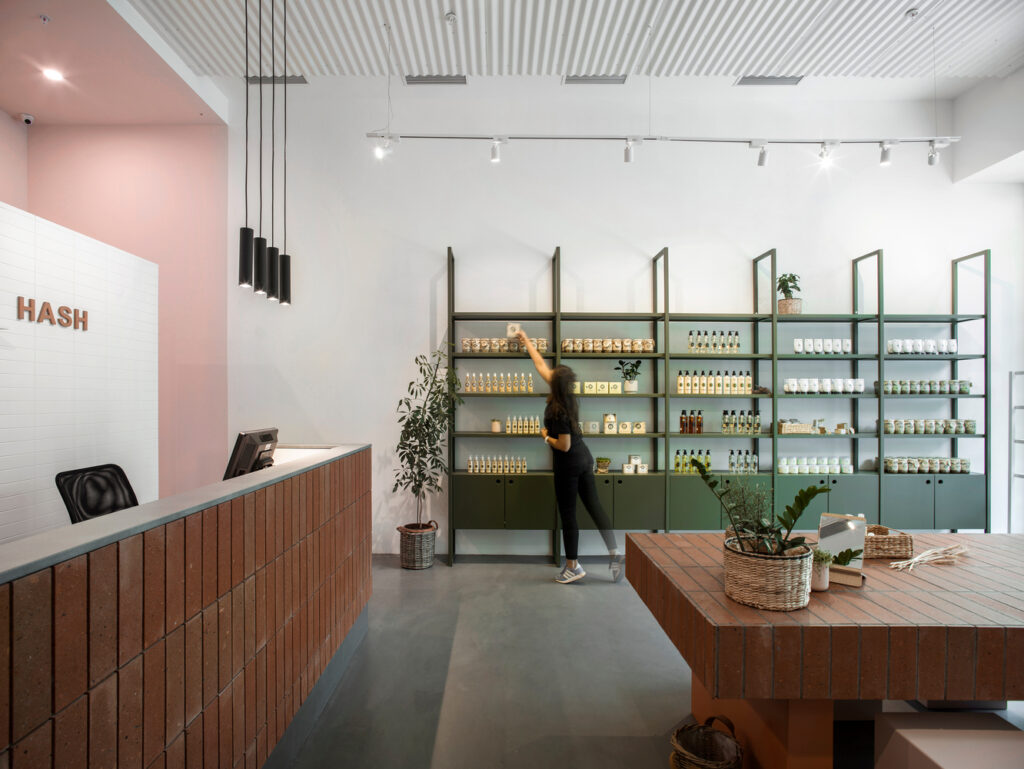
Pay Attention to Texture in Retail Lighting
Texture plays an important role in retail lighting design, as it helps to set the tone of a space and creates visual interest.
For instance, when selecting materials for your store’s ceiling, avoid shiny surfaces or dark finishes — which reflect ceiling light — as they can be distracting or visually disorienting. Instead, use matte surfaces, which help diffuse the light and create a warm ambiance throughout the space.
Additionally, textures can be used to add depth and dimension to products on display by highlighting their features. When the lighting is more diffused, the texture of the object being lit will be less accentuated. On the other hand, when you use directional light, it creates shadows and, thus, texture.
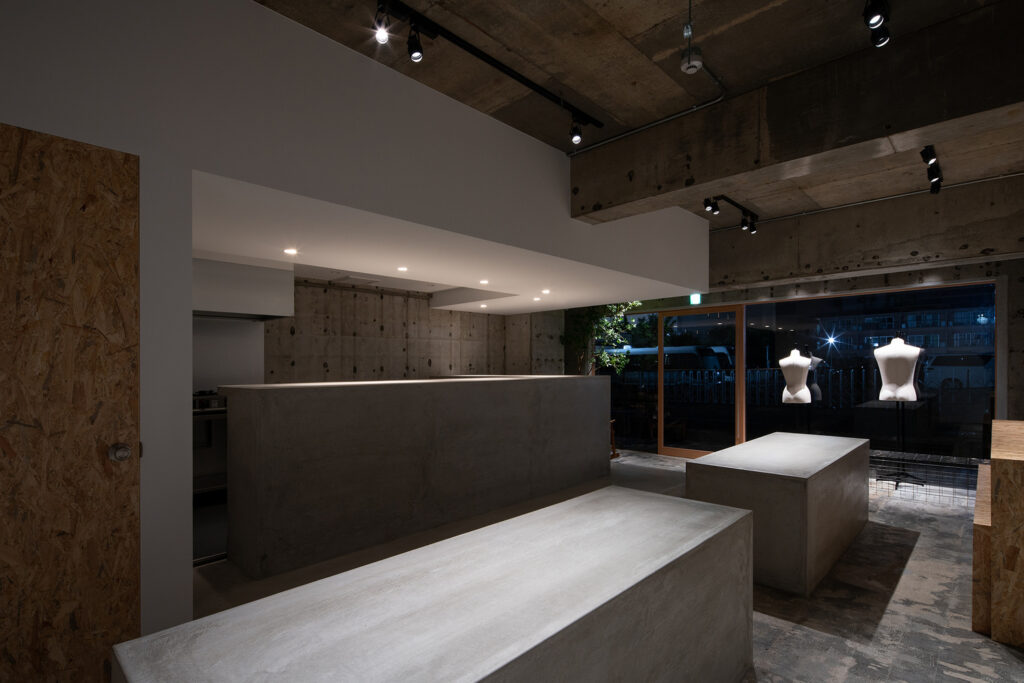
Different examples of textures created with various lighting designs include:
- Frosted glass fixtures diffuse the light and create a warm, inviting atmosphere
- Track lighting highlights product features and creates visual interest in small areas
- Recessed lights placed around displays to draw attention to products without being too overpowering
- Accent lighting with directional spotlights emphasizes the texture in textiles and other materials
- Uplights provide soft, indirect lighting and create a warm ambiance throughout the space
Use Brightness, Color Temperature and High CRI to Enhance Lighting for Retail
Lumen output and CRI are two of the most important factors to consider when it comes to shop lighting.
To create an inviting atmosphere and brighten up even the darkest corners of your store, think in terms of lumens and calculate the square footage of your retail space. For every square foot, assign a set number of lumens.
For example, to provide ambient lighting:
- A square foot at floor level needs 20 lumens
- A table or raised surface might need 30 lumens
- A workspace or a retail space could probably use between 50 and 70 lumens per square foot
Choosing the correct color temperature, which is measured by its K (kelvin) rating, of LED bulbs is integral to a retail space. Color temperature can create either a warm or cold environment and affect how products are displayed.
To produce a pure and more natural lighting effect — ideal for dressing rooms and grocery stores — consider installing 4000-4500K bulbs. Jewelry stores can use bright light bulbs up to 5000K resulting in a bluish white color.
Generally, the higher the color rendering index (CRI) of a light source, the truer or more natural-looking the product’s color appears under that light.
Get Smart LED Lighting for Retail Stores
LED lighting is currently one of the most popular and versatile choices for retail, especially because it meets most retail store lighting technical requirements.
This type of lighting is energy-efficient, long-lasting and customizable to fit. LED bulbs offer superior efficiency and light output compared to traditional bulbs: A smart LED light bulb lasts for around 50,000 hours, in contrast to incandescent bulbs, which last about 2,000 hours.
LED-based smart lighting systems are an advanced type of lighting system that use LED bulbs. The ability to adjust light intensity and color allows retailers to create atmospheres that draw customers in and encourage them to stay longer.
Smart lighting systems can be programmed to control, monitor and adjust lighting levels according to the season or time of day, or to focus light on particular products or areas within the store. They can also automatically dim lights when they are not needed, which can provide energy savings of up to 50 percent compared with systems using manual controls.
Retailers can use smart lighting systems as part of their marketing strategy by spotlighting specific products or promotions throughout the store at different times. By using motion sensors and programming light patterns, you can draw attention to items, such as new arrivals or sale items, without having to constantly rearrange displays or signage.
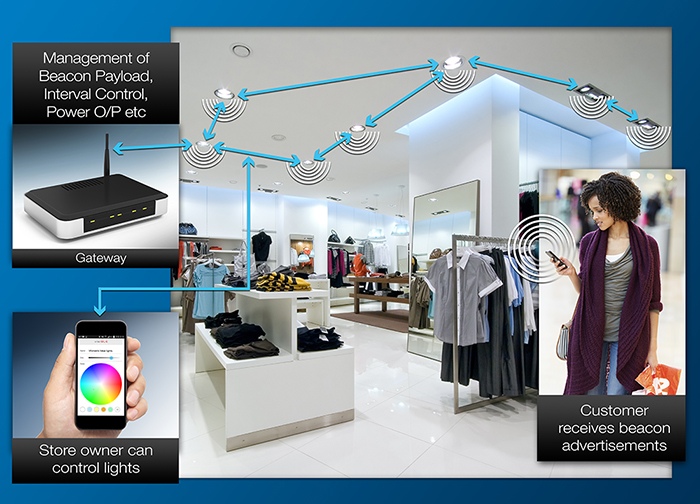
For consumers, smart lighting provides a customized and convenient in-store experience. Customers can use pre-populated shopping lists and turn-by-turn navigation via their smartphones’ Bluetooth to find items they need. They can also get location-based notifications about relevant sales and other savings based on their shopping history.
For retailers, smart lighting offers a better understanding of customers’ preferences and needs. By using the data collected by smart lighting systems, retailers can improve in-store product placement, inventory levels, and employee-customer interactions.
Flatter the Customer with Dressing Room Lighting
When it comes to the lighting for retail dressing rooms, it is crucial to create a pleasant and inviting atmosphere.
This is the most important space in your clothing store. When a shopper enters the fitting room, the chance of them buying the clothes they’re trying on increases from 10 to 67 percent – if the customer likes what they see. But if the lighting is so harsh that it looks like a police interrogation room, they are likely to be unhappy and flee your store as quickly as possible.
First, let’s get take a look at which types of lighting not to use in a dressing room:
- Overhead lighting: Ceiling-mounted lighting creates unflattering shadows on the face and the body, highlighting one’s worst flaws.
- Fluorescent lighting: Fluorescent lighting in the dressing room leads to flickering light on the face, which can make the face look green.
- Fluorescent overhead lighting: Only use this lighting in the fitting room if you don’t want to sell any clothing.
In a nutshell, avoid low-CRI (under 90), overhead, fluorescent or halogen lighting as this will create harsh shadows and unflattering colors.
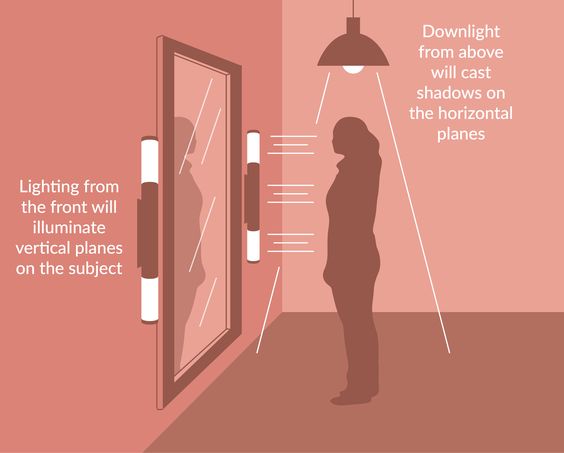
What works best for fitting room lighting? Soft, diffused light from indirect sources will provide flattering illumination that’s easy on the eyes, compliment the shopper’s physical form (i.e. no unflattering shadows), and still allow them to see what they are trying on.

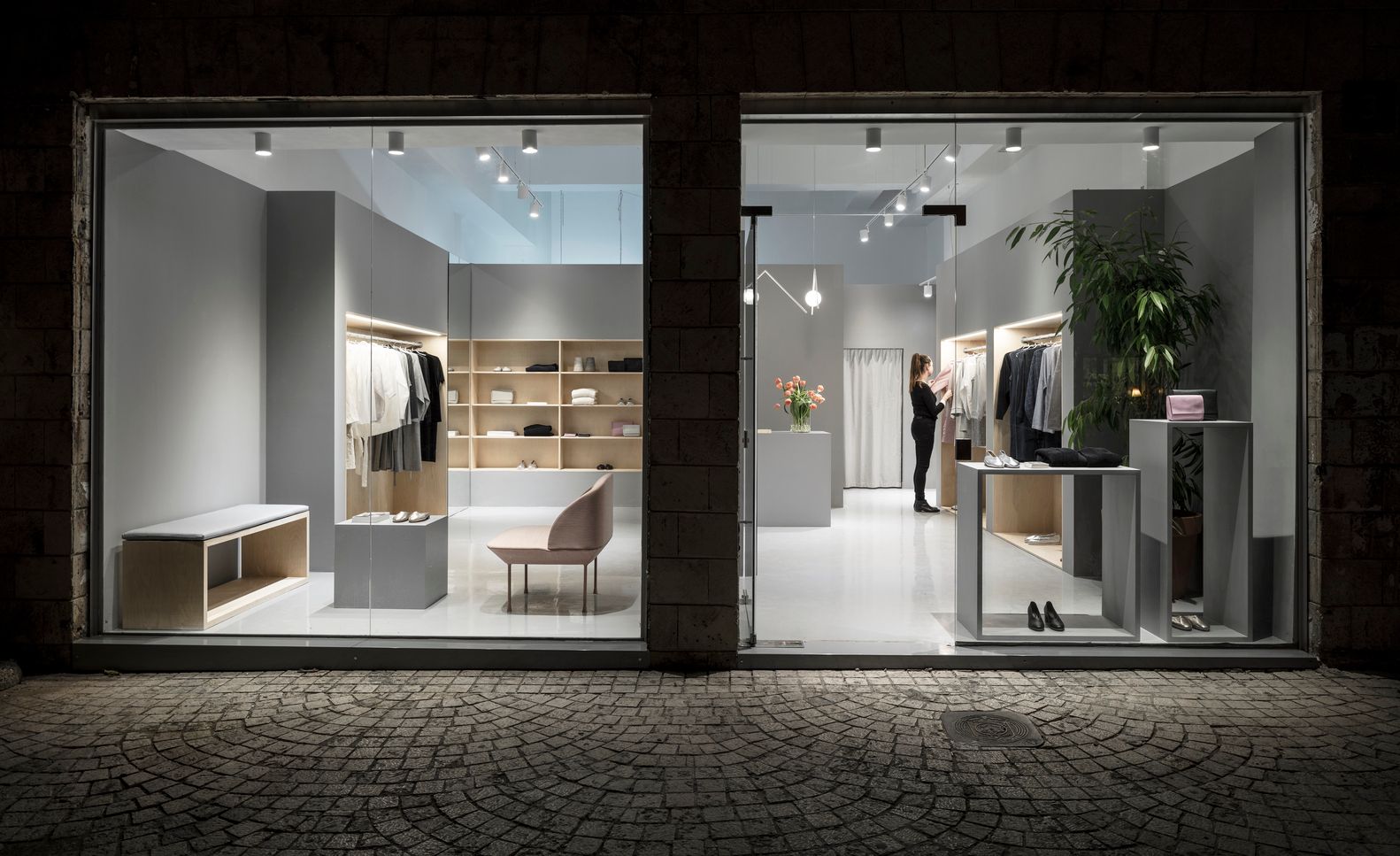

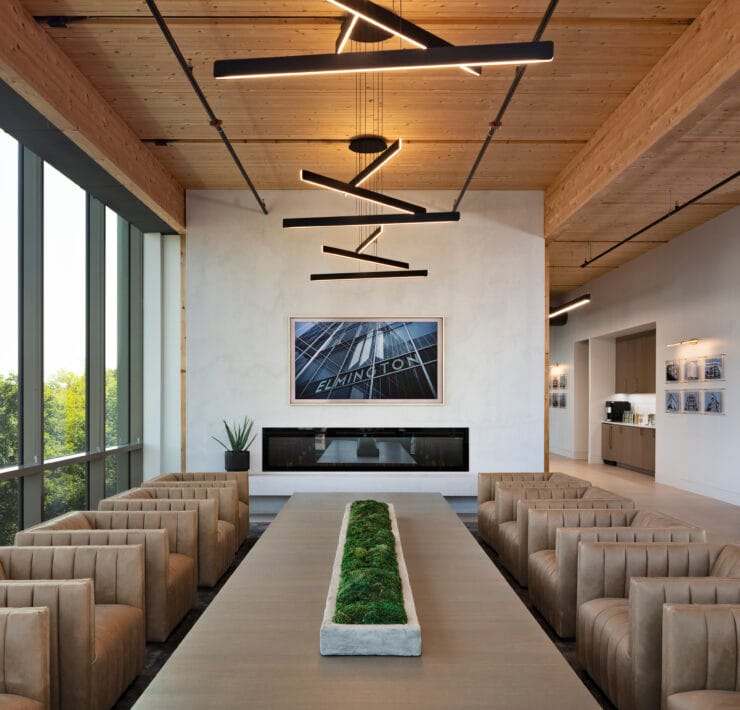
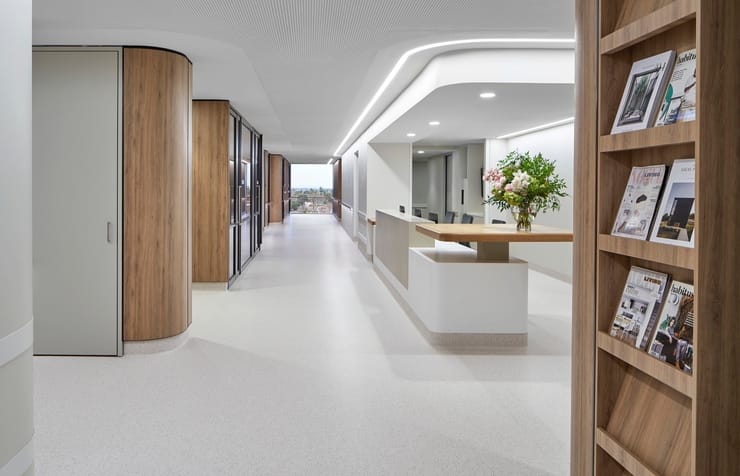
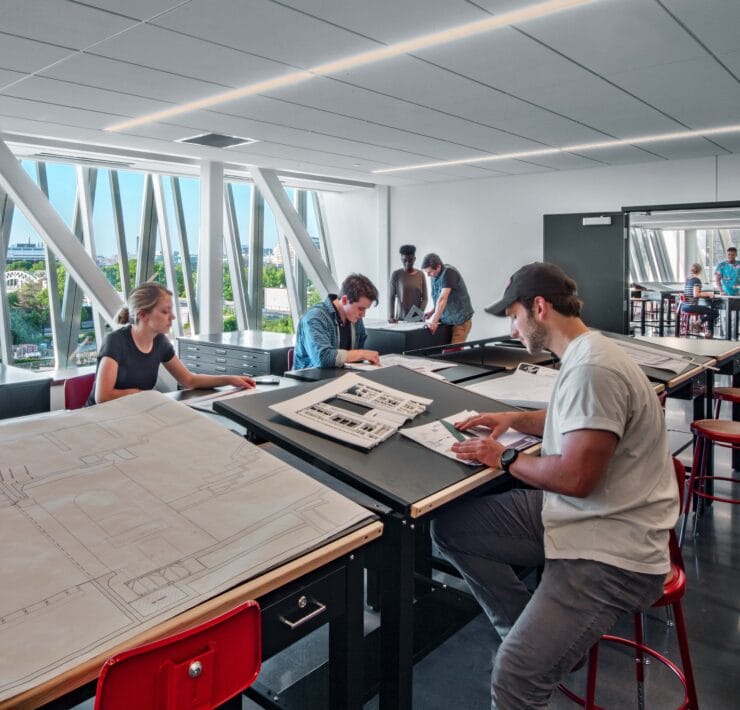
[…] and design efforts, see if cost-effective solutions might work. A simple change in-store lighting, for instance, can refresh your look without needing a full store […]
[…] Retail Lighting: Five Best Practices […]
[…] Retail Lighting Best Practices: 7 Ways to Optimize Your Store’s Lighting Design Plan […]